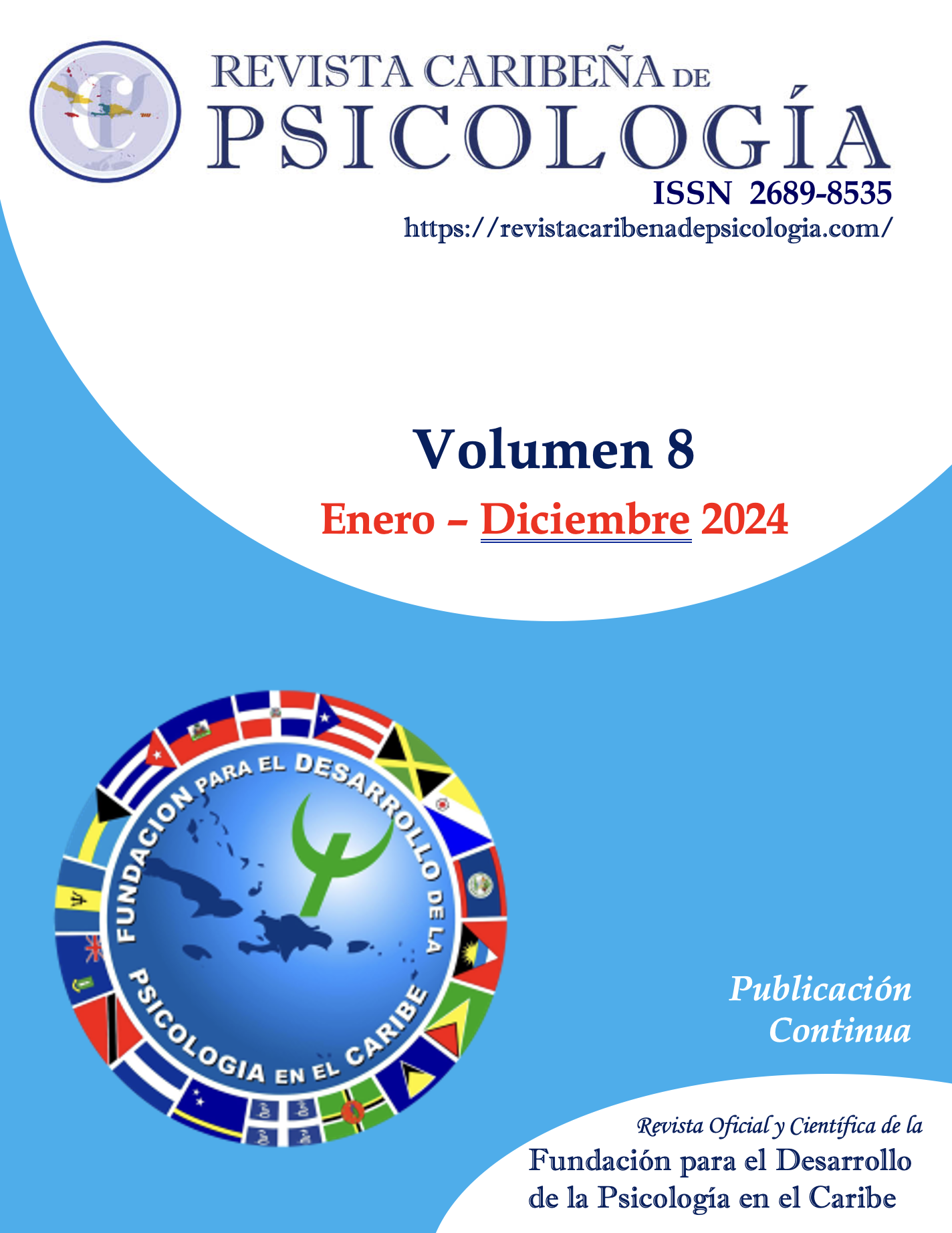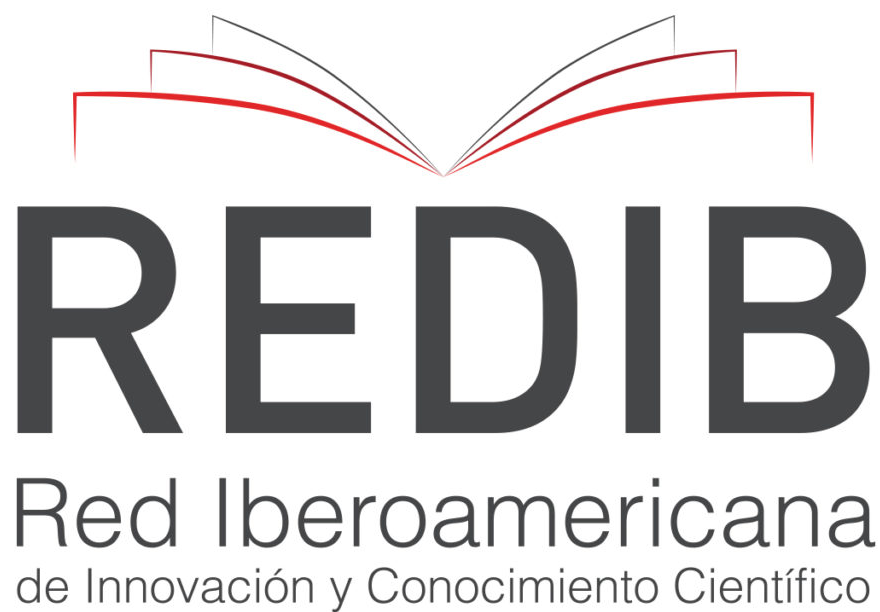El Rol Mediador del Afecto Negativo en la Relación entre el Mobbing y la Intención de Abandono
Mobbing, intención de abandono, afecto negativo como mediador
DOI:
https://doi.org/10.37226/rcp.v8i1.8405Palabras clave:
mobbing, afecto negativo, intención de abandonoResumen
El propósito de esta investigación fue auscultar el rol mediador del afecto negativo en la relación entre el mobbing y la intención de abandono en una muestra de personas que trabajan en Puerto Rico. La presente investigación tuvo un diseño cuantitativo no experimental transversal exploratorio descriptivo utilizando la técnica de análisis de datos secundarios. La muestra estuvo compuesta por 627 adultos con edades entre 21 a 79 años (M = 38.8, DE = 13). Los resultados mostraron que la relación entre el mobbing y la intención de abandono está parcialmente mediada por el afecto negativo. Se discuten las implicaciones organizacionales a la luz de los hallazgos de la revisión de literatura.
Citas
Anjum, A., & Muazzam, A. (2018). Workplace bullying and turn-over intention among university teachers. Journal of Arts and Social Sciences, 2, 51-62. https://jass.pk/downloads/dec-2018/10th04.pdf
Ashfort, B. (1994). Petty tyranny in organizations. Human Rela-tions, 47(7), 755-778. https://doi.org/10.1177/001872679404700701
Baron, R. M., & Kenny, D. A. (1986). The moderator-mediator variable distinction in social psychological research: Concep-tual, strategic and statistical considerations. Journal of Personality and Social Psychology, 51, 1173-1182. https://psycnet.apa.org/doi/10.1037/0022-3514.51.6.1173
Beguy, M. R. (2003). Mobbing: el acoso psicológico en el trabajo [Tesis de licenciatura inédita]. Universidad de Belgrano.
Bojana, B. P., & Atencio, E. (2010). El mobbing en el desempeño laboral: implicaciones en la salud. Multiciencias, 140-145. https://www.semanticscholar.org/author/Betania-Pinzón-de-Bojana/104891438
Brewerton, P. M., & Millward, L. J. (2001). Organizational research methods: A guide for students and researchers. Sage Publications.
Brodsky, C. M. (1977). The harassed worker. Industrial and Labor Relation Review, 31(1), 123-124.
Carnero, M. A., Martínez, B. & Sánchez-Mangas, R. (2012). Mob-bing and workers health: Empirical analysis for Spain. Interna-tional Journal of Manpower, 33(3), 322-339. https://www.ucm.es/data/cont/docs/518-2013-11-05-wpasad-2010-30.pdf
Champion, D. J. (1981). Basic statistics for social research (2nd ed.). MacMillan.
Djurkovic, N., McCormack, G., & Casimir, G. (2006). Neuroticism and the psychosomatic model of workplace bullying. Journal of Managerial Psychology, 21(1), 73-88. https://doi.org//10.1108/02683940610643224
Domínguez-Aguirre, L. R., Sergio-Hernández, J. C., Roncancio-Roncancio, P. & Lozano-Jiménez, I. (2014). ¿Por qué permanecer en este trabajo? Causales de la intención de salida. European Scientific Journal 10(26), 65-80.
Ege, H. (2000). Mobbing: Il terrore psicológico sul posto di lavoro e le sue conseguenze psicofisiche sull’individuo. Leadership Medica, 3(c). http://www.proteo.rdbcub.it/article.php3?id_article=85
Einarsen, S., & Hauge, L. J. (2006). Antecedentes y consecuencias del acoso psicológico en el trabajo: una revisión de la literatura. Revista de Psicología del Trabajo y de las Organizaciones, 22(3), 251-274. http://www.redalyc.org/articulo.oa?id=231317121002
Einarsen, S., & Rakness, B. I. (1997). Harassment in the workplace and the victimization of men. Violence and Victims, 12(3), 247-263. https://doi.org/10.1891/0886-6708.12.3.247
Einarsen, S., Rakness, B. I., & Matthiesen, S. M. (1994). Bullying and harassment at work and their relations to work environ-ment quality. An exploratory study. European Journal of Work and Organizational Psychology, 4(4), 381-401. https://doi.org/10. 1080/13594329408410497
Einarsen, S. (1999). The nature and causes of bullying at work. International Journal of Manpower, 20(1/2), 16-27. https://doi.org/10.1108/01437729910268588
Einarsen, S. (2000). Harassment and bullying at work. A review of the Scandinavian approach. Aggression and Violent Behavior, 5(4), 370-401. https://doi.org/10.1016/S1359-1789(98)00043-3
Folkman, S., & Lazarus, R. S. (1988). Coping as a mediator of emo-tion. Journal of Personality and Social Psychology, 54(3), 466–475. https://psycnet.apa.org/doi/10.1037/0022-3514.54.3.466
Gable, S. L., & Haidt, J. (2005). What (and why) is positive psy-chology? Review of General Psychology, 9, 103-110. https://doi.org/10.1037/1089-2680.9.2.103
Ghayyur, M., & Jamal, W. (2012). Work-family conflicts: A case of employee’s turnover intention. International Journal of Social Science and Humanity, 2(3), 168-174. https://www.ijssh.org/papers/90-CH007.pdf
Glasø, L., Løkke Vie, T., Holmdal, G., & Einarsen, S. (2011). An application of affective events theory to workplace bullying: The role of emotions, trait anxiety and trait anger. European Psychologist, 16(3), 198-208. https://psycnet.apa.org/doi/10.1027/1016-9040/a000026
Goleman, D. (2018). La inteligencia emocional: Porque es más importante que el cociente intelectual. B de Bolsillo editores.
Hayes, A. F. (2021). Introduction to mediation, moderation, and condi-tional analysis: A regression-based approach (3rd ed.). The Guilford Press.
Hernández-Sampieri, R., Fernández-Collado, C., & Baptista, P. (2014). Metodología de la investigación (6ta ed.). McGraw Hill LTC.
Hirigoyen, M. F. (2006). Todo lo que hay que saber sobre el acoso moral en el trabajo. Ediciones Paidós.
Hirigoyen, M. F. (2014). Todo lo que hay que saber sobre el acoso moral en el trabajo. Ediciones Paidós.
Kang, I.-G., & Bichelmeyer, B. A. (2019). Advancing the knowledge base toward a comprehensive model—Part 1: An empirically tested performance model. Performance Improve-ment, 58(8/9), 26–36. http://doi.org/10.1002/pfi.21895
Kerlinger, F. N., & Lee, H. B. (2008). Investigación del comportamiento: métodos de investigación en ciencias sociales (4ta ed.). McGraw-Hill.
Lazarus, R. S. (1991). Emotion and adaptation. Oxford University Press.
Leymann, H. (1996). The content and development of mobbing at work. European Journal of Work and Organizational Psycholo-gy, 5(2), 165-184. https://psycnet.apa.org/doi/10.1080/13594329608414853
Leymann, H. (1990). Mobbing and psychological terror at work-places. Violence and Victims, 5(2), 119-126. http://www.mobbingportal.com/LeymannV&V1990(2).pdf
Martínez-Lugo, M. E., (2006). El acoso psicológico en el trabajo: La experiencia en Puerto Rico. Alethia, 24, 21-33. https://www.redalyc.org/articulo.oa?id=115013462003
Martínez-Lugo, M. E., Castillo, V., Henríquez, E., Feliciano, M., Espinosa, A., Quiñones, M., Andino, P., De Jesús, K., González, A., González, J., Hernández, E., Zorrilla, R. & Ayvar, A. (2019). Variables organizacionales relacionadas a la incivilidad en el trabajo [Manuscrito inédito]. Programa de Psicología Industrial y Organizacional, Universidad Albizu, PR.
Martínez, Lugo, M., Guzmán, R., Sotomayor, M., Merced, M. & Monserrate, P (2008). El acoso psicológico en el trabajo y su relación con el clima organizacional y el bienestar psicológico. Ponencia presentada en 55 Convención Anual Asociación de Psicología de Puerto Rico.
Martínez, M. D. L. M., Irurtia, M. J., Martínez, C., Torres, H., & Queipo, D.(2012). El acoso psicológico en el trabajo o mobbing: Patología emergente. Gaceta Internacional de Ciencias Forenses, 3, 5-12. https://www.uv.es/gicf/3Ar1_Mtz_Leon_GICF_03.pdf
Matamala, J. & Barrera, A. (2019). Acoso laboral en trabajadoras chilenas que atienden víctimas de violencia: Desafío investigativo. Fides et Ratio, 17, 131-163. https://fidesetratio.ulasalle.edu.bo/index.php/fidesetratio/article/view/7/6
Metts, S., & Planalp, S. (2002). Emotional communication. In M. L. Knapp & J. A. Daly (Eds.). Handbook of interpersonal commu-nication (pp. 339-369). Sage Publications LTD.
Morales, J., (2015). Acoso psicológico laboral (mobbing) y su impacto en el desempeño laboral. Aplicación a los maestros de los municipios de Juana Díaz y Ponce [Disertación doctoral inédita]. Univer-sidad de León.
Muldoon, J., Keough, S. M., & Lovett, S. (2018). The mediating role of workplace attitudes on the leader–member ex-change—Turnover intention relationship. The Psychologist-Manager Journal, 21(4), 229–248. https://doi.org/10.1037/mgr0000079
Namie, G. (2003). Workplace bullying: Escalated incivility. Ivey Business Journal, 68(2), 1-6. https://iveybusinessjournal.com/publication/workplace-bullying-escalated-incivility/
Nielsen, M. B., Magerøy, N. Gjjerstad, J., & Einarsen, S. (2014). Workplace bullying and subsequent health problems. Tidsskriffet den Norke Laegeforening, 134, 1233-1238. https://tidsskriftet.no/en/2014/07/workplace-bullying-and-subsequent-health-problems
Organización Internacional del Trabajo. (OIT, 2019). Informes de la Comisión Normativa: violencia y acoso en el mundo laboral: Instrumentos presentados para su adopción por la Conferencia. Ac-tas Provisionales, 108ª reunión. Ginebra.
Orthony, A., Clore, G. L., & Collings, A. (2011). The cognitive struc-ture of emotions. Cambridge University Press. https://doi.org/10.1017/CBO9780511571299
Peña, F., & Sánchez, S. (2006, mayo 17). El mobbing. Su contenido y significado [Ponencia presentada]. V Congreso de la Asociación Mexicana de Estudios de Trabajo, Oaxtepec, México.
Prieto, J. (2004). El abandono voluntario del mercado de trabajo. Revista de Economía Aplicada, 35(13), 83-104.
Protection from Harassment Act of 1997, 40 U.K.C. § Public General Acts (1997). https://www.legislation.gov.uk/ukpga/1997/40/contents
Regtz, G., & Molleman. E. (2012). To leave or not to leave: When receiving interpersonal citizenship behavior influences an employee’s turnover intention. Human Relations 66(2), 193-218. https://doi.org/10.1177/001872671245431
Rodríguez-Montalbán, R., Figueroa Justiniano, R., López Morales, N., Bacó Acevedo, M., & Flores Cruz, O. (2022). Recojo mis bártulos y me voy: Propiedades psicométricas de la Escala de Intención de Abandono Organizacional. Revista Kálathos, 12(1), 73-99. http://kalathos.metro.inter.edu/kalathos_mag/publications/archivo4-vol12-num1.pdf
Rosario-Hernández, E., Rovira-Millán, L. V., Pons Madera, J. I., Rodríguez, M., & Cordero, A. (2009). Acoso psicológico en el ambiente laboral y el trastorno de estrés post traumático. Revista Interamericana de Psicología Ocupacional, 28(2), 138-148. http://revista.cincel.com.co/index.php/RPO/article/view/137/135
Rosario-Hernández, E., Rovira Millán, L. V., Comas Nazario, A. R., Medina Hernández, A., Colón Jiménez, R., Feliciano Rivera, Y., Rodríguez Caballero, B., Hernández Fernández, M., Martínez Julio, F., Díaz Montijo, C., Cabán Valent, L., Ruiz Pacheco, S., Feliciano Toro, B. P., Marrero Díaz, C., & Berrios Quiñones, G. (2018a). Workplace bullying and its effect on sleep well-being: The mediating role of rumination. Puerto Rican Journal of Psychology, 29(1), 164-186. https://repsasppr.net/index.php/reps/article/view/357/351
Rosario-Hernández, E., Rovira Millán, L.V., Vega Vélez, S., Zeno-Santi, R., Farinacci García, P., Centeno Quintana, L., Navedo Santos, J., Feliciano Toro, B.P., De Jesús Caraballo, R., Morell Fausto, J., Cepeda Fax, S., Cintrón Lugo, M., Colón Burgos, L., Sánchez Ortiz, N., Sánchez Collazo, I., Díaz Pla, L., Toledo Medina, M.A., Flores Quirós, A.S., & Pagán Torres, O.M. (2019). Exposure to workplace bullying and suicidal ideation: An exploratory study. Journal of Applied Structural Equation Modeling, 3(1), 55-75. https://jasemjournal.com/wp-content/uploads/2019/10/JASEMV31_Rosario-Hernández-et-al-2019.pdf
Rosario-Hernández, E., Rovira, Millán, L.V., B. P., Vélez Ramos, J., Cruz, M., Vélez, E., Torres, G., Alomar, G., Caldera, J., Santiago, M., Arroyo, Y., Sánchez, I., & Rodríguez, N. (2018b). Effect of the exposure to workplace bullying on turnover in-tention and the mediating role of job satisfaction, work en-gagement, and burnout. Revista Interamericana de Psicología Ocupacional, 37(1), 26-51. http://revista.cincel.com.co/index.php/RPO/article/view/224/pdf
Rosario-Hernández, E., Rovira Millán, L.V., Rodríguez Irizarry, A., Rivera Alicea, E., Fernández López, L.N., López Miranda, R.S., Segarra Colondres, C., Torres Hernández, J.A., Burgos González, M.Z., González Echevarría, A., Ortiz Blanco, M.A., Padilla Santiago, M.A. & Torres García, N. (2014). La salud cardiovascular y su relación con los factores de riesgo psicosociales en una muestra de personas empleadas en Puerto Rico. Revista Puertorriqueña de Psicología, 25(1), 98-1116. https://www.repsasppr.net/index.php/reps/article/view/234/234
Rosario-Hernández, E. & Rovira Millán, L.V., (2011). Estudio empírico de las consecuencias psicologicas del mobbing en una muestra de empleados en Puerto Rico. Revista Interamericana de Psicología Ocupacional, 30(2), 183-99. http://revista.cincel.com.co/index.php/RPO/article/view/120/118
Russell, J. A., (1980). A circumplex model of affect. Journal of Personality and Social Psychology, 39(6), 1161-1178. https://psycnet.apa.org/doi/10.1037/h0077714
Salin, D. (2003). Bullying and organizational politics in competi-tive and rapidly changing work environments. International Journal of Management and Decision Making: Workplace bullying, 4(1), 35-46. https://doi.org/10.1504/IJMDM.2003.002487
Samrah Jamshaid, D. N. I. M., Shahida P. (2021). Workplace bully-ing as a predictor of turnover intention among teachers: Role of job embeddedness. Psychology and Education Journal, 58, 5111–5119. https://doi.org/10.17762/pae.v58i1.2066
Sawyer, O. O., Srinivas, S., & Wang, S. (2009). Call center employ-ee personality factors and service performance. Journal of Ser-vices Marketing, 23(5), 301-317. https://doi.org/10.1108/08876040910973413
Sherman, A., Bohlander, G., & Snell, S. (1999). Administración de recursos humanos. Thomson International.
Smith, C. A., & Ellsworth, P. C. (1985). Patterns of cognitive ap-praisal in emotion. Journal of Personality and Social Psychology, 48(4), 813–838. https://doi.org/10.1037/0022-3514.48.4.813
Stein, N. L., Trabasso, T., & Liwag, M. (1993). The representation and organization of emotional experience: Unfolding the emotion episode. In M. Lewis & J. M. Haviland (Eds.), Hand-book of emotions (pp. 279–300). The Guilford Press.
Van-Katwyk, P.T., Fox, S., Spector, P. E., & Kelloway, E. K. (2000). Using the job-related affective wellbeing scales (JAWS) to in-vestigate affective responds to work stressors. Journal of Occu-pational Health Psychology, 5(2), 219-230. https://doi.org/10.1037//1076-8998.5.2.219
Velasco, M., Navarro, J., & Rueff, R. (2017). Teoría de los acontecimientos afectivos: revisión de su impacto y desarrollos en el estudio del afecto en las organizaciones. Revista Psicología: Organizaciones y Trabajo, 17(1), 30-38. http://dx.doi.org/10.17652/rpot/2017.1.12106
Weiss, H. M., & Beal, D. J. (2005). Reflections on affective events theory. Research and Emotion in Organization, 1(1), 1-21. https://doi.org/10.1016/S1746-9791(05)01101-6
Weiss, H. M., & Cropanzano, R. (1996). Affective Events Theory: A theoretical discussion of the structure, causes and conse-quences of affective experiences at work. In B. M. Staw & L. L. Cummings (Eds.), Research in organizational behavior: An an-nual series of analytical essays and critical reviews, Vol. 18, pp. 1–74). Elsevier Science/JAI Press.
Wilson, C. B. (1991). U.S. businesses suffer from workplace trau-ma. Personnel Journal, 70, 47-50.
Wong, Yui Woon dan Yui Tim Wong (2017). The effects of per-ceived organizational support and affective commitment on turnover intention: A test of two competing. Journal of Chinese Human Resource Management, 8(1), 2-21. https://doi.org/10.1108/JCHRM-01-2017-0001
Zapf, D. (1999). Organizational, work group related and personal causes of mobbing/bullying at work. International Journal of Manpower, 20(1-2), 70-85. https://doi.org/10.1108/01437729910268669
Descargas
Publicado
Cómo citar
Número
Sección
Licencia
Derechos de autor 2024 Karla De Jesus Fuentes, Miguel E. Martínez Lugo, Ramón Rodríguez Montalbán

Esta obra está bajo una licencia internacional Creative Commons Atribución 4.0.







